Of all Norway's many fantastic road trips, this historic mountain road between west and east is one of the very best. Here's your guide to Gamle Strynefjellsvegen.
Are you planning a road trip in Norway? If so, don't take the quickest route. Because in the very heart of the Norwegian mountains is a road that’s not a means to a destination but a thrilling journey in itself.
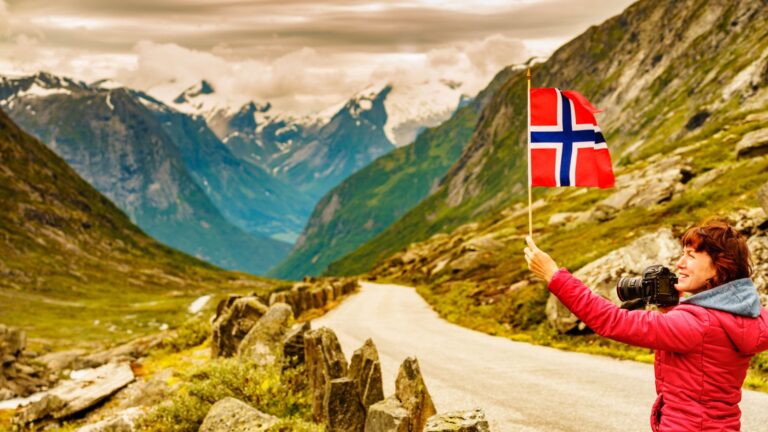
Far more than just mere asphalt, gravel, and stones, the historic 26 km long Gamle Strynefjellsvegen (Old Stryn mountain road) provides a journey back in time to all who make the trip.
Hand-built stone walls and long rows of guard stones lining the way recall a time before motorised vehicles, when Norwegians made the long journey over the mountains with horses and wagons.
A scenic route
One of Norway’s 18 designated national scenic routes, the road has not been the primary method of driving over the mountains for many years.
The historic stretch of road has been replaced by a series of tunnels on route 15 that travels from east to west around the northern edge of Jostedalsbreen National Park. If you're in a rush, that's the route you'll take. But if not, this scenic detour is well worth your time.
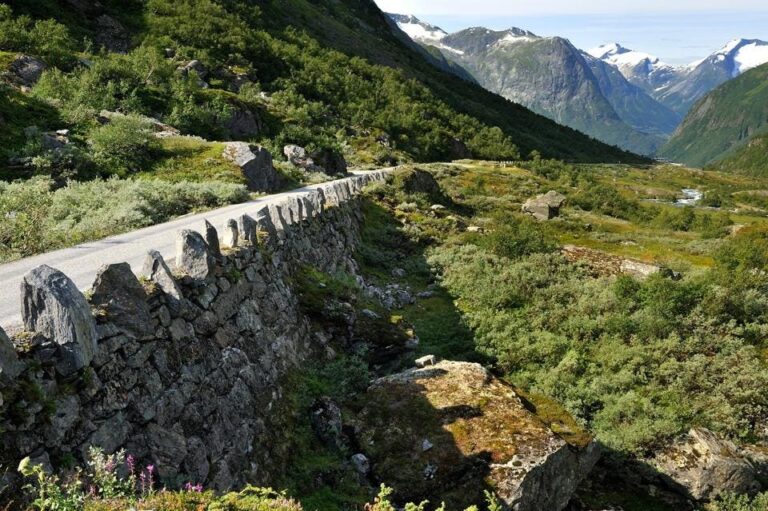
Now a protected road, it remains in place as an important part of Norwegian cultural heritage and offers inspiring views of Norwegian nature. To the east, the rounded landscape carved by the ice age contrasts wonderfully with the dramatic mountains seen to the west.
But this isn't just a road for driving. Given the relative lack of cars, cycling and hiking are just as popular.
There are many hiking trails to mountain lakes and farms to explore, while the descent down to the lake at the picturesque village Hjelle suits drivers and cyclists alike.
The history of this remarkable road
Given the road’s status as a tourist route today, it was tourism that surprisingly drove its construction in the last years of the 19th century. Tourism in the fjord villages increased, which birthed the idea of a mountain road.
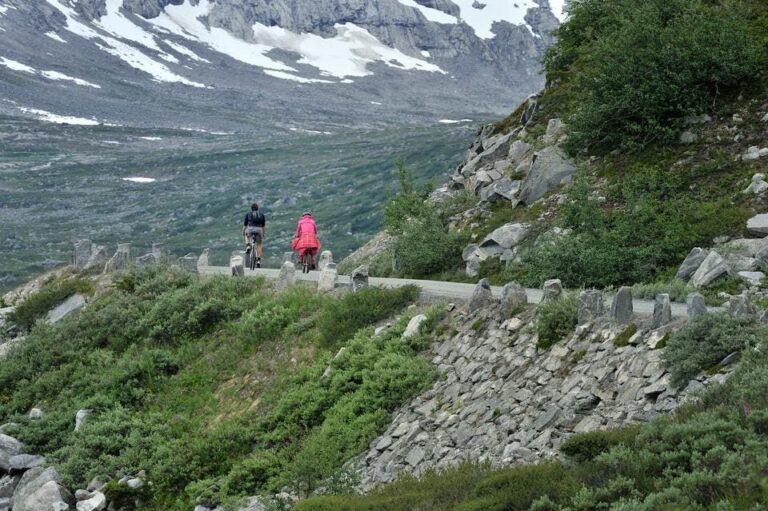
Between 1889 and 1894, the road emerged thanks to the gruelling ten-hour days of the workforce. They weren't all locals, either. Workers were sourced from the local villages, the Gudbrandsdal valley, and construction workers from Sweden were even brought in to assist.
Viewpoints and rest stops
As with all of Norway’s national scenic routes, the road has received investment in the form of viewpoints and rest stops in the years since the program began. However, given the road’s protected status, most of the facilities are at the road’s western end towards the village of Hjelle.
Videfossen
Videfossen waterfall is a historic attraction renowned for its azure, thunderous waters. An ideal spot for photography, the viewing point immerses visitors in the experience of being right at the waterfall.
Located on a cliff, it overlooks Hjelledalen and offers vistas of the Skålafjellet mountain, peaking at 1,848 metres.
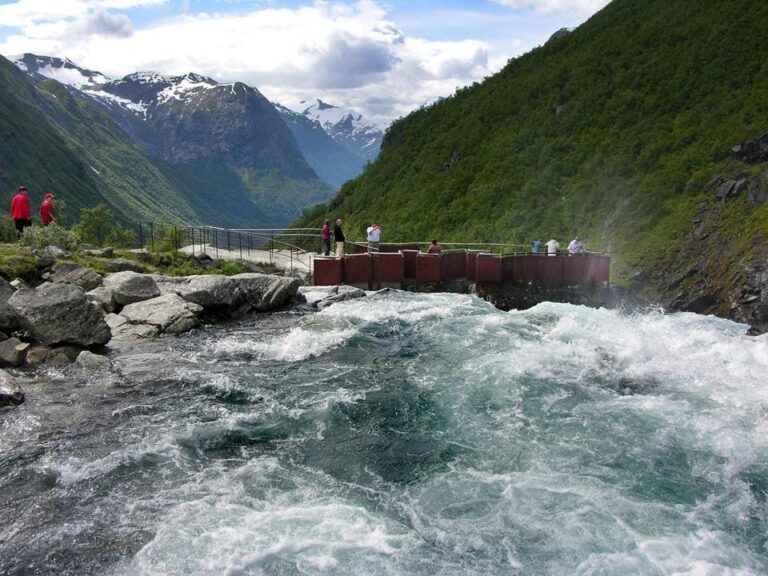
While there's a free car park available at the site, be aware that Videseter hotel charges for both hotel access and parking in its lots.
Øvstefossen
Drive down a few hairpin bends and you’ll find the equally impressive waterfall Øvstefossen. The waterfall, which flows into the Hjelledalen valley, has been a spectacle for visitors crossing Strynefjellet for over a century.
A 200-metre footpath from the road allows visitors to closely experience its foamy cascades, with the safety of steel railings in place.
Jøl stone bridge
Finally, the Jøl bridge, an architectural gem from 1883, was overshadowed when the Strynefjell road became an all-year route and a new bridge was constructed beside it. This old stone-vault bridge is now somewhat hidden and challenging to locate.
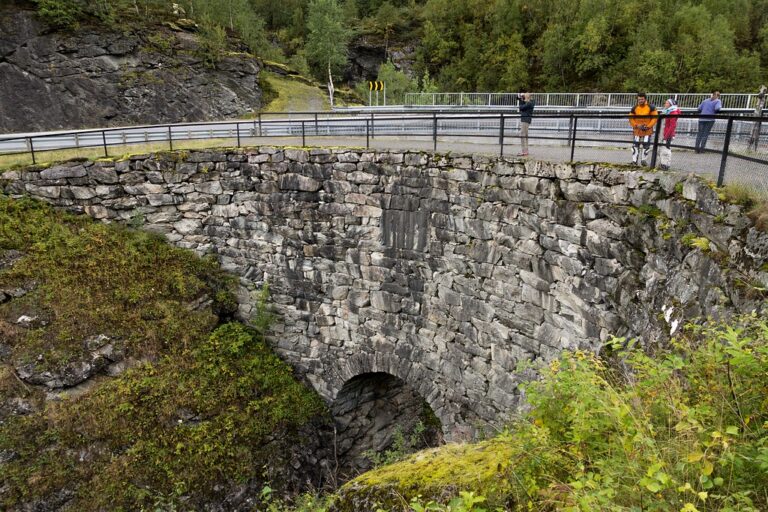
However, plans are in progress to establish a viewing platform to enhance its visibility and showcase its historic significance.
Summer skiing
In most countries, ski resorts are open in the winter and the spring. Not so with Stryn Summer Ski Center!
With a slogan of “winter is best in the summer”, the centre offers downhill, free skiing and terrain park opportunities in the basin of the glacier Tystigbreen.
The 1,000-metre chair lift brings you up to 1,300 meters above sea level. There is a drop height of a total of 290 meters from the chair lift. The season for summer skiing is short, varies each year, and depends in part on the road opening dates.
Hjelle
Before continuing on to Stryn, allow some time for a stop in the charming lakeside village Hjelle.
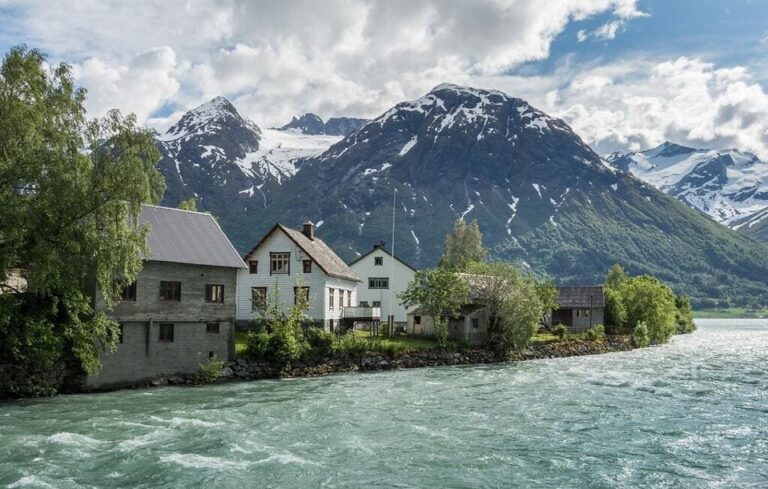
There’s few better places for a picnic lunch than amongst the wooden houses, mountain backdrops, and lakeside views of Hjelle.
Plan a road trip
As with many road trips in Norway, a little planning is required to get the most out of your trip.
First and foremost, the most important thing to bear in mind is that Gamle Strynefjellsvegen is a summer-only route. Precise dates the road is open vary each year because the decision is primarily based on weather and snow conditions.
In previous years, the road closure has taken place sometime between mid-September to early October. Typically, the road is open sometime between mid-May and mid-June. This does make planning a trip a little trickier, but it's all part of the realities of driving in Norway.
But there is something else to bear in mind too. In parts, the road is exposed to the unpredictable mountain weather. As such, the road can be subject to short-term closures, such as overnight.
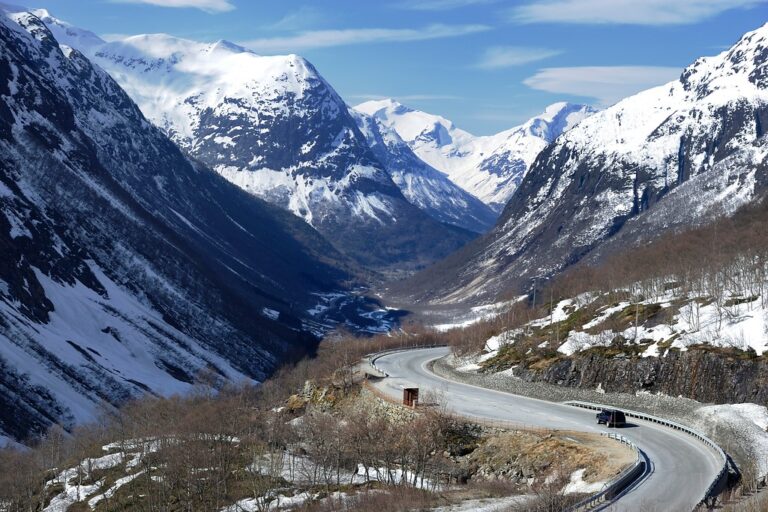
In the summer of 2023, the road was completely closed for about a week due to the damage caused by Storm Hans.
Where to stay on Gamle Strynefjellsvegen
There are few accommodation options in the immediate area, but there are some options if you want to stay local to the scenic route.
For example, the Hjelle Hotel is a good choice if you want to make the most of your time in the mountains. The hotel and spacious grounds on the Hjelle lake shoreline retain the atmosphere of rural Norway from days long gone.
For a truly immersive stay, consider a night at the Videseter lodge. This is no full-service hotel though! Located near the Videfossen waterfall, accommodation has been offered here to mountain wanderers for generations.
Have you driven Gamle Strynefjellsvegen? Let us know your experiences in the comments below.

